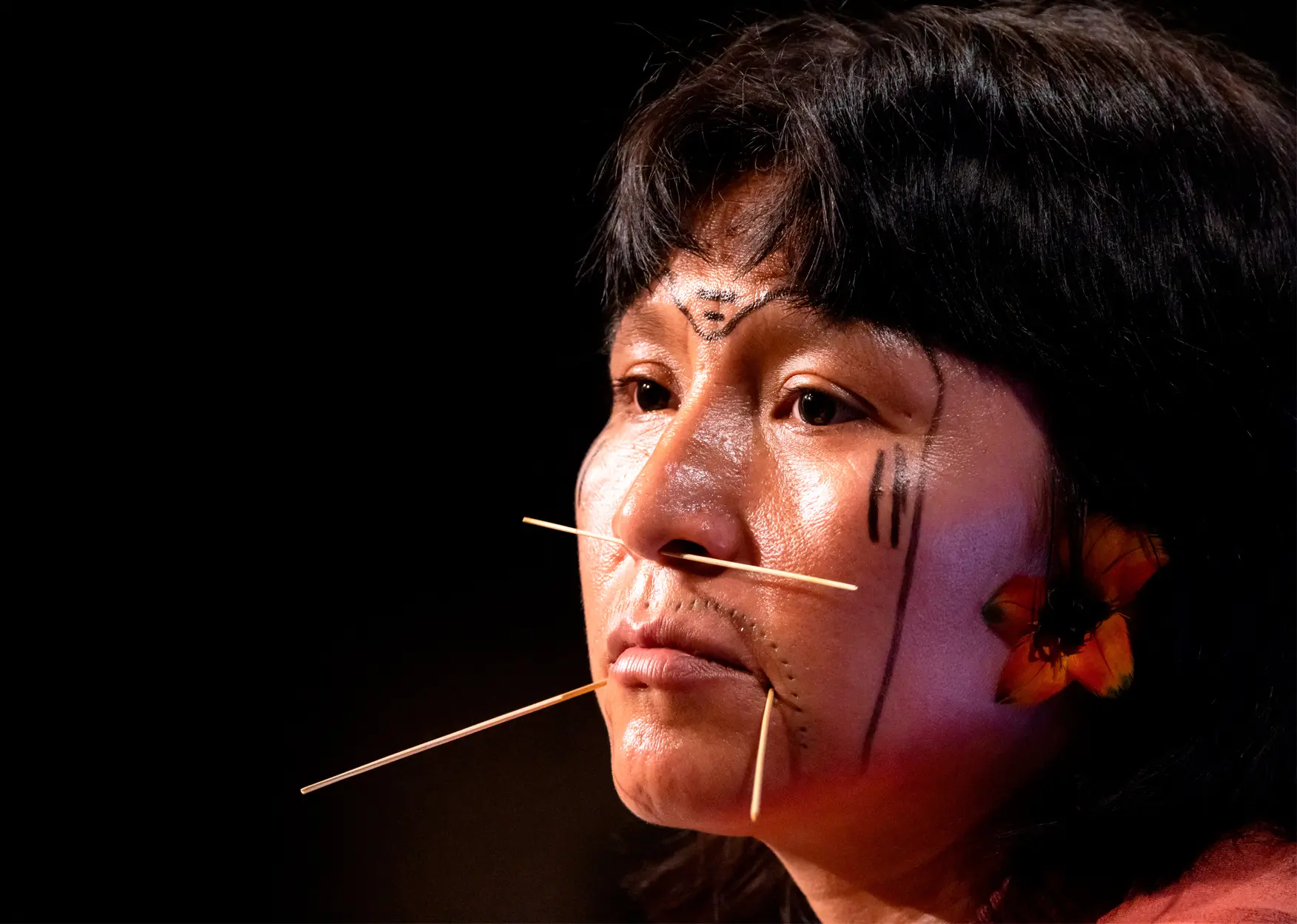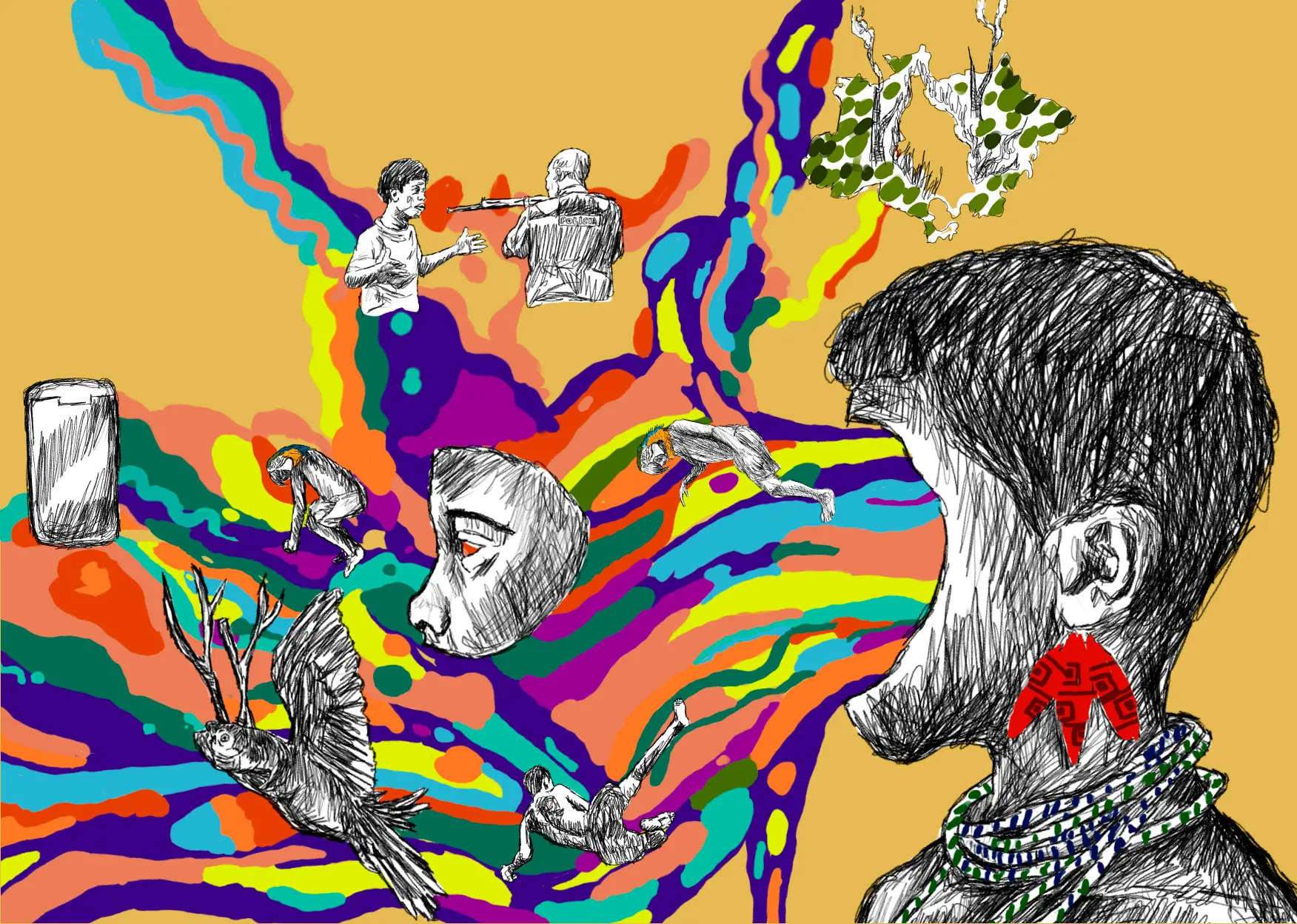“We are fighting human animals and we are acting accordingly,” declared Israel’s defense minister, Yoav Gallant, in an attempt to justify the unjustifiable: cutting off water, electricity, gas, and food to the people of the Gaza Strip, after Israeli civilians were massacred by the terrorist group Hamas. Similar phrases are heard again and again by correspondents covering the Middle East war, which might be called a massacre, given the disproportionate force that has been used against civilians in Israel and Palestine at another. As the Folha de S.Paulo journalist Yan Boechat has written, the other is an “animal,” someone who can no longer be seen as “human.” Although it is obligatory to note the huge difference between an authority publicly calling another group of people “animals,” the common-sense word chosen to name the other, whether Israeli or Palestinian, exemplifies what many columnists around the world are defining as the “dehumanization” of those who are ethnically or racially different, the root of genocides throughout history. As an example, take the genocide of the Tutsi people in Rwanda after Hutu radio and newspapers launched a campaign to “kill the cockroaches,”. More than 500,000 Tutsis were killed in 100 days.
By treating the other as an “animal,” extermination is apparently justified by some people. Promoting dehumanization is enough to authorize slaughter. This mutual dehumanization is perhaps the only explicit consensus between Israel’s extreme right, led by Benjamin Netanyahu, and the leaders of Hamas. For both sides, the only way out is to wipe the other not just out of the territory, but out of life – and this is why the violence against civilian populations is supposedly legitimate. But is this about dehumanization?
From a Euro-centric perspective, without a doubt it is. Nevertheless, it’s worth daring to think based on other philosophical traditions, which challenge anthropocentrism – centered on human beings. For example, “creatures are people” for most native peoples in the Americas. Humanity is seen from the vantagepoint of the person looking at it. This means that to themselves, animals are humans. It is impossible to explain something so complex in an editorial – for a deeper look at this idea, I suggest diving into the fascinating concept of “Amerindian perspectivism,” as devised by anthropologists Eduardo Viveiros de Castro and Tânia Stolze based on the knowledge of different native peoples.
Therefore, what we all share would not be “animality,” but rather “humanities.” This vision is evident in myths, which evoke a time when different beings communicated and recognized each other as reciprocally human. It is not a mere inversion, but a radical displacement of colonizing thought. This different way of understanding worlds and understanding each other within worlds has led to an existence that makes it possible to live with everyone else without annihilating the common home, what is now called the climate crisis by non-Indigenous activists, while shamans like Davi Kopenawa, of the Yanomami people, call it the “Earth’s revenge.”

October 13, 2023: a Palestinian child wounded during bombing of the Gaza Strip receives medical care on day six of the war in the Middle East. Photo: Saher Alghorra/AFP
If I am offering this reflection at this time of horror sparked by events in the Middle East, it is because I suspect that calling out the “dehumanization” of the other, by calling the other an “animal,” albeit a “human animal” – whether Israeli or Palestinian – continues to hark back to the same rationale that drives war – all wars. Calling it out therefore operates within the same logic that it calls out. The imprisonment of thought must be broken to be able to create a way out. As long as possible solutions are sought inside the logic that produces wars, annihilation will be the rule, as time has shown.
This is the same rationale that is causing the sixth mass extinction of species and global heating; they belong to a conception of a world that haslforgotten that all life has a place and all share the same destiny – and this is perhaps another translation for humanities, in the plural. If there is any chance for us to escape the horror, it is through the radical decolonization of thought. Starting with understanding that the world is not formed by “individuals,” but by relationships – everything is “in relation to” something else. The Amazon Rainforest, along with the other enclaves in nature that resist, despite the destruction promoted by capitalism, is a relationship between many humanities.
Is it easy to change a population shaped by the idea that the world is as this population sees it and nothing more, is as this population inhabits it and nothing more, is how this population learned and nothing more? No. It is one of the most difficult things imaginable. This radical decolonization of thought demands dressing a body that is not separated from other humanities that share our planet-home and that create and recreate it in these incessant relationships. This movement of transmutation is not just necessary for Israelis and Palestinians. It is perhaps the only way for us to confront the climate cataclysm promoted by a rationale that continues to allow transnational corporations to destroy our common home, while governments and congresses around the world are complicit. Will we be able to do it? The chances are slim, but they exist insofar as our capacity to imagine them. We must hold tight to the imagine/action to increase them.
The sharpest criticism formulated in the West of the conversion of “animals” into goods – othered-things which can be discarded, as is done globally with cows, pigs, and chickens, beings raised for slavery and annihilation at industrial proportions, with holocausts reissued daily – is “speciesism.” This concept can be – in a somewhat crude but easily understandable way – summed up as racism against animals. The same rationale feeding racism among human beings is what justifies the daily annihilation of non-humans – or more-than-humans, the formulation we have adopted at SUMAÚMA. It is worth remembering that some of the justifications for the enslavement of African people, which lasted over four centuries in Brazil, were that they were not people, nor did they have souls. What horrifies most people today – or hopefully horrifies them – was normalized in the homes of good people, just as it is normalized for the majority to eat the meat of cows who are born and die in the confines of the production line. In our manifesto, we argue that it is impossible to talk about democracy in the twenty-first century without including more-than-humans.
An idea has grown in the world, especially among younger generations, that there is no ethical justification for turning another being into a carcass in production lines involving daily torture and death, where they are born to be raped (in the case of heifers), tortured and killed – a capitalist invention that has absolutely nothing in common with the ritual of hunting among native peoples or traditional communities. Most of today’s soy, produced at the cost of deforesting the Amazon, is used to feed these slaves.
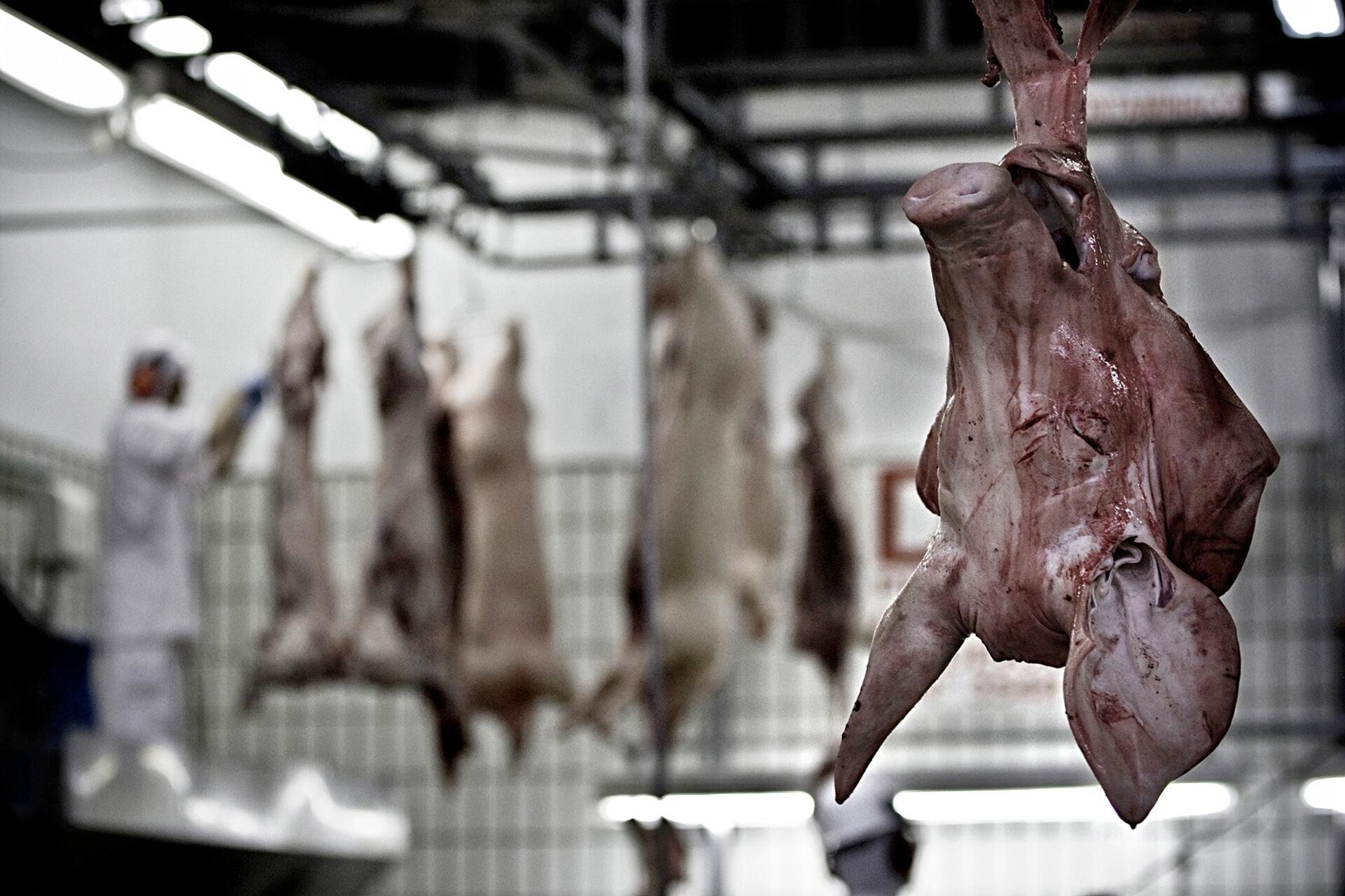
The Aurora cooperative’s meatpacking plant in the municipality of Chapecó, in the state of Santa Catarina, in Brazil’s South region. Photo: Marlene Bergamo/Folhapress
In turn, both the deforestation and the cows’ belching are responsible for a significant portion of the carbon emissions causing global heating. Capitalism produces large-scale death, connecting ways to kill the living-home that is at the same time us and that we inhabit. An unprecedented study by the Climate Observatory, released last Tuesday (Oct. 24), estimates that in 2021 food systems accounted for 74% of the 2.4 billion gross tons of greenhouse gasses released by Brazil into the atmosphere. These emissions include carbon gas that is released into the air when forest is converted into farm and pasture land, direct agricultural emissions, such as methane from cattle burping, fossil fuels burned by agricultural machinery and to transport food, energy used by agroindustry and supermarkets, and solid and liquid waste from all of these processes. If it were a country, Brazilian beef would be the planet’s seventh largest carbon gas emitter, ahead of Japan.
Quite frequently, native peoples have concepts that are much more intricate than speciesism, where communication between beings is done by shamans with the help of plant compounds, such as Ayahuasca or Yãkõana. In early October, during the MOTH – More Than Human Rights conference in Chile, there was a discussion on the possibilities that science and artificial intelligence have opened the possibility of communicating with beings like whales, for instance. José Gualinga, one of the leaders of Ecuador’s extraordinary Sarayacu people, cut in: “We descended from the jaguar. Our ancestors were jaguars.” A radical shift in perspective.
What does this have to do with Israel and Palestine? What does this have to do with the Amazon? Everything. Without decolonizing our thinking, any solution will feed the logic of war, because it is born of the same uterus. Without decolonizing our thinking, Israelis and Palestinians will continue to reciprocally call each other “animals,” the soulless thing that can be exterminated, and we will continue rapidly racing along with the climate cataclysm. It’s not about no longer seeing the other as an “animal” and strengthening the anthropocentrism that has given us license to destroy the planet – rather, it is about re-humanizing the animals who share our common home, which radically changes the rationale that oppresses and annihilates us.
Utopia? Maybe. Yet if we do not try to imagine a world where we can live with everyone else, and, using imagination as a powerful instrument to resist and create possibilities, become the utopia we imagine, we are left only to witness the extinction – whether through conflicts and massacres, whether by the extreme events that have already proven, in this year of 2023, they can destroy and kill more than any war.
After all, a minority of humans was able to produce a way of non-life capable, in a little over two centuries, starting with the so-called Industrial Revolution, of changing the climate and morphology of the Earth, which is where we find ourselves today. Could there be anything more absurd than this, something that in centuries past would have meant calling another person crazy if they were to suggest that something like this could happen, something that to this day many deny is happening, even when their homes are literally falling down on top of their heads because of a cyclone that has never happened before?
Faced with the possibility of our own extinction, we must at least be capable of changing our thinking/feeling, the way we inhabit our bodies, the way we understand each other in relation to everyone else, so that it is possible to go back to living – not as humanity, but in a constant relationship between humanities.
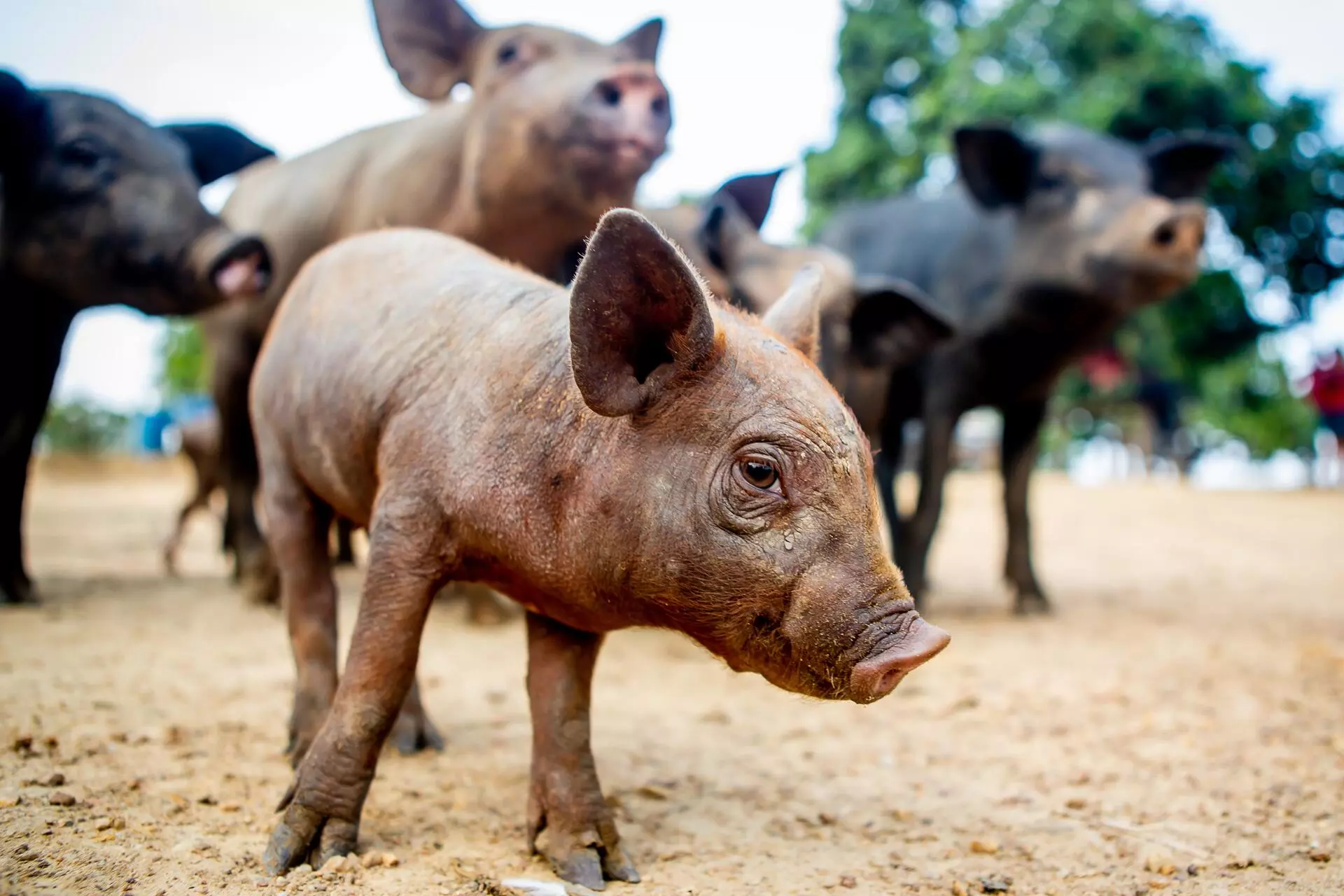
Pigs at a base run by Brazil’s environmental agency, Ibama, during an operation to combat deforestation, landgrabbing, and illegal farming on Ituna/Itatá Indigenous Territory, in the state of Pará, in August 2023. Photo: Lela Beltrão/Sumaúma
It is in this movement that we bring you a special report from SUMAÚMA’s editor in chief, Talita Bedinelli, on Amazônia Revelada, a political archeology project. In partnership with forest researchers, archeologists are using cutting edge technology to uncover the human trajectory in the forest. As has already been widely proven by scientific experts, part of the world’s largest rainforest was planted by the ancestors of today’s Indigenous people, as well as by more-than-humans. The SUMAÚMA team tagged along on the first expedition to Terra do Meio, in Pará.
It is also within this movement that we are introducing columnist team Kerexu Martim and Sidarta Ribeiro. Kerexu is a young Mbya Guarani artist who lives in a village in the far south of the state of São Paulo. Sidarta is a neuroscientist renowned for his research work and for his powerful books, including “The Oracle of Night: The History and Science of Dreams,” published by Pantheon, and “Sonho Manifesto,” (only available in Portuguese), published by Companhia das Letras. Together, Kerexu and Sidarta are writing a monthly column for SUMAÚMA – with illustrations by her and text by him, but both working in connection.
Accompanying Yanomami filmmaker Morzaniel Ɨramari at the Venice Film Festival, anthropologist and translator Ana Maria Machado narrates the forest-man’s view of the sinking city. Another anthropologist, Carlos Fausto, tries to answer the question of how war was waged in Apyterewa Indigenous Territory, in Pará, the most deforested in Brazil, which is currently in the process of removing non-Indigenous invaders, with strong reactions from the region’s politicians and land-grabbers. The question driving the article is how, over thirty-five years, a recently-contacted people were violated in such a brutal manner, along with the forest.
Journalist Ângela Bastos reports on the marco temporal (historic cut-off point) hearings from a Xokleng village, in Santa Catarina, as well as the days of uncertainty that followed. Despite Lula’s partial veto of the Apocalypse Bill passed by the Senate, predatory agribusiness and the corporations that support it are obviously advancing. As the team at the Climate Observatory noted, “what was at stake was proof of a principle, more than the historic cut-off point: it was Congress’s ability to act without restraints and in open war with other branches of government. From this aspect, even Lula’s veto of the main problems in Bill 2903 was a victory for the ruralist bloc. Although the president has kept his promise to the Indigenous peoples, it was the agricultural caucus that moved forward the most in the game.”
SUMAÚMA seeks to do decolonial journalism. This is the starting point for each of our reports and stories. It isn’t about just inverting the position from which worlds are seen, but the way we inhabit the very body of journalism. This is the path taken by this issue.
Fact check: Plínio Lopes
Proofreader (Portuguese): Valquiria Della Pozza
Spanish translation: Meritxell Almarza
English translation: Sarah J. Johnson
Visual editing: Lela Beltrão
Editorial workflow, copy editing, and layout: Viviane Zandonadi
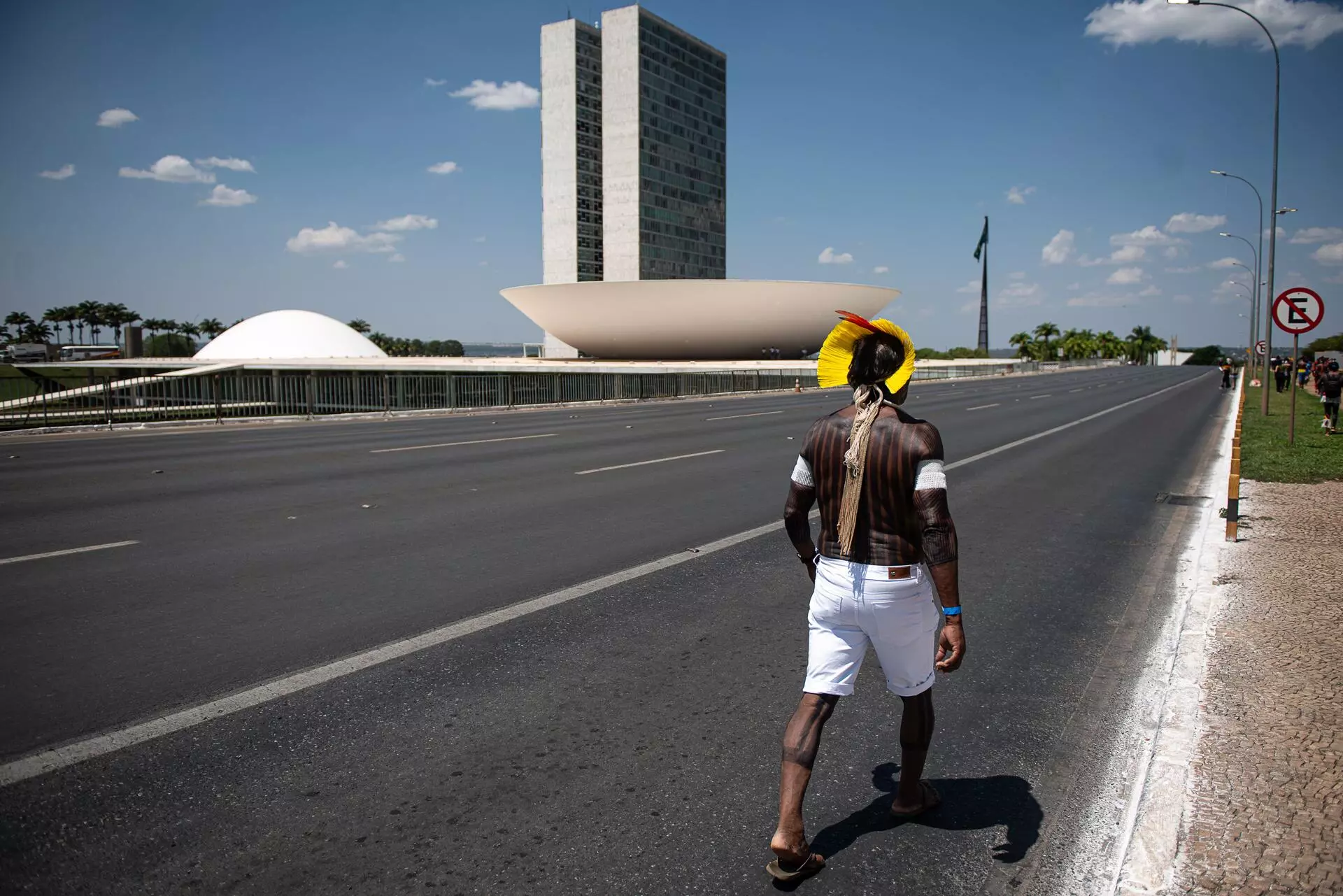
Indigenous man walks toward the Federal Supreme Court on the final day of the justices’ ruling on the historic cut-off point. Photo: Matheus Alves/SUMAÚMA

